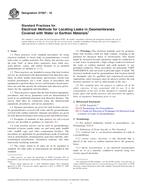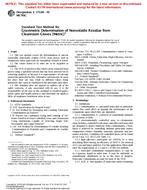1.1 This guide describes a stepwise procedure for using existing information, and if available, supporting field and laboratory data concerning a process, materials, or products potentially linked to adverse effects likely to occur in the environment as a result of an event associated with a process such as the dispersal of a potentially invasive species or the release of material (for example, a chemical) or its derivative products to the environment. Hazard Analysis-Critical Control Point (HACCP) evaluations were historically linked to food safety (Hulebak and Schlosser W. 2002 (1);2 Mortimer and Wallace 2013 (2)), but the process has increasingly found application in planning processes such as those occurring in health sciences ; Quattrin et al. 2008 (3); Hjarno et al. 2007 (4); Griffith 2006 (5) or; Noordhuizen and Welpelo 1996 (6)), in natural resource management (US Forest Service 2014 a,b,c (7, 8, 9), (US EPA, 2006 (10); see also
|
http://www.fws.gov/ fisheries/ans/ANS-HACCP.html; http://www.haccp-nrm.org/; or http://www.waterboards.ca.gov/water_issues/programs/swamp/ais/prevention_planning.shtml (last accessed June 16, 2014) |
Product Details
- Published:
- 01/01/2015
- Number of Pages:
- 30
- File Size:
- 1 file , 330 KB
- Redline File Size:
- 2 files , 690 KB


